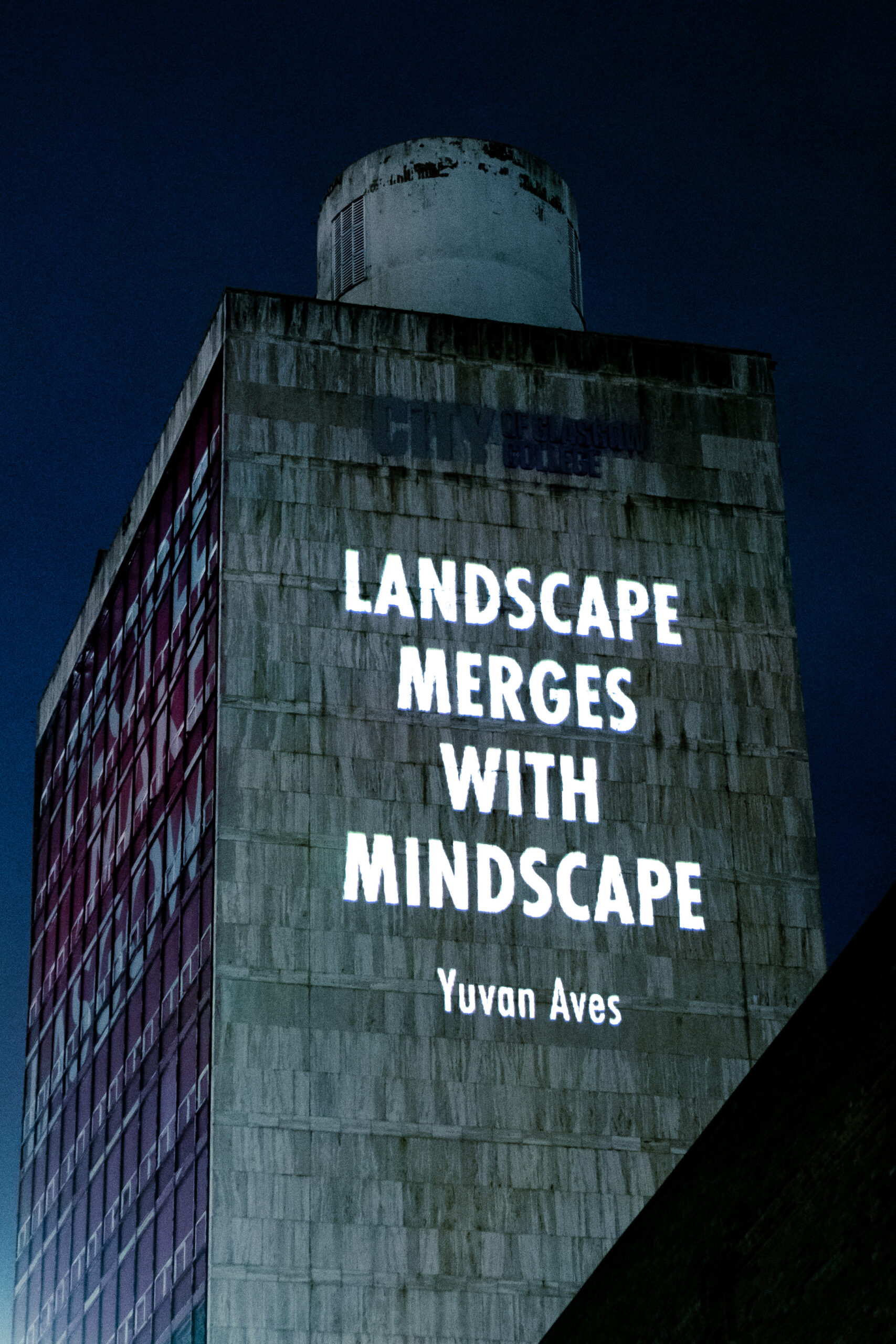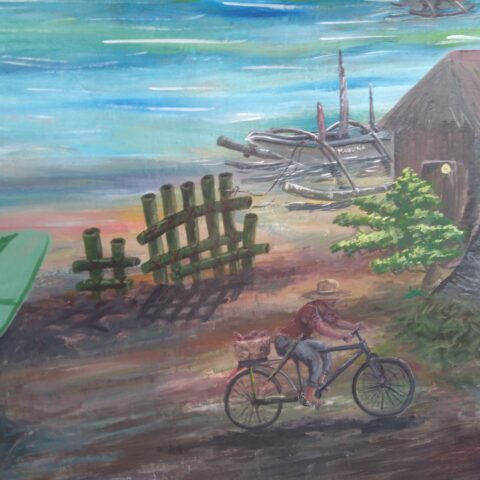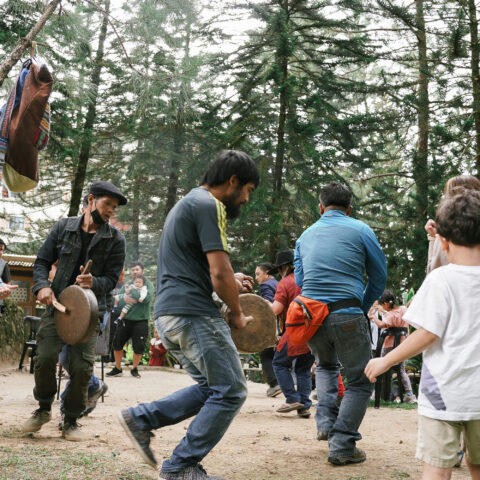Mobilized by the Agam Agenda, When Is Now brings poetry and art to this year’s 27th Conference of Parties (COP27) in Egypt, and magnifies the role of culture in creating viable futures for all. Photo: Hurt Earth light projection by artist Jenny Holzer, with text from the Agam Agenda’s anthology of climate stories and poetry, Harvest Moon © 2021 Jenny Holzer, member Artists Rights Society (ARS), NY.
By Aina Eriksson and María Faciolince
Since its inception in 1994, the United Nations Framework on Combating Climate Change (UNFCCC) has aimed to push forward international commitment and action on climate issues. The treaty focuses on increasing scientific research to inform how best to adapt to a changing climate and safeguard adequate food production and biospheres, while still enabling continued (albeit so-called ‘sustainable’) economic development.
With 198 member states, also called parties, the UNFCCC and its yearly meeting, the Conference of Parties (COP), is the world’s largest platform for international climate agreements. Throughout the years, negotiations have pulled forth new priority areas, such as transitioning away from fossil fuels and coal-based energy, keeping the average rise of global temperatures below 1.5 degrees, and increasing climate action and its transparent reporting.
This year, the COP27 held in Sharm El-Sheik, Egypt, focuses on how to implement the goals decided in COP26, which include: mitigation and adaptation, climate finance, and loss and damage.
Who pays for what is lost?
The failure to fund a loss and damage mechanism has been urgently missing in the international climate change governance structure. This year, the long-awaited agenda point driven by countries most vulnerable to the climate crisis, is a key issue of negotiation. Loss and damage addresses the unjust and unequal impacts of a growing climate toll on low-emitting countries. A recent report published by Vulnerable Group of 20 shows that one-fifth of the wealth of 20 countries most vulnerable to climate change, equivalent to 525 billion USD, has been lost to emergency relief and climate-disaster response over the last two decades.
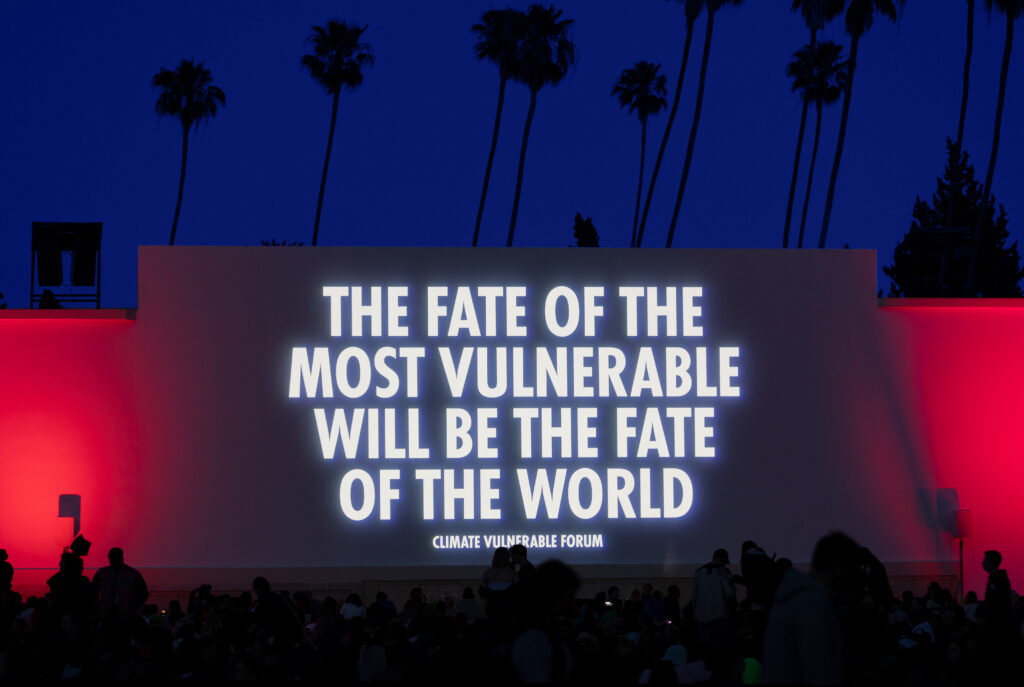
Contrary to adaptation, which seeks to increase capacity and provide ways to adapt to a changing climate, the loss and damage agenda places a differentiated responsibility on high-emitting countries to help finance the consequences and damage brought on by the climate crisis in the most affected countries.
At its core, loss and damage requires high-emitting countries to acknowledge their historical role in the climate crisis and take responsibility for both short and long-term responses to the devastating effects of a rapidly changing climate. It also provides a much needed reframing to climate finance, one that steps out of the dependency-laden premise seen in adaptation, for example, where ‘developed’ countries “do their part” by providing new technologies or capacity building to ‘developing’ countries.
Communities bearing the brunt of the climate crisis have the place-based knowledges and much of the necessary tools needed, and many are actively preparing for the challenges ahead. But a series of (mainly) financial limitations, including debt owed to high-emitting countries, stand in the way of harm-reduction mechanisms in the face of increasing devastation.
Previous negotiations have shown that loss and damage is a particularly difficult point for consensus. As the climate crisis is ultimately an issue underpinned by notions and histories of development, the loss and damage debate challenges high emitting countries’ visions for the future. With this framing, ‘development’—and actions required for the health of people and planet—are centered on culture: namely, how we relate with each other, and with the Earth.
Culture is not an add-on to socio-ecological factors considered primordial in allowing communities to prosper. It is precisely the system of values and beliefs that encompasses individuals, collectives and environments, which manifests itself in profoundly different ecological consequences.
The role of culture(s)
Culture encompasses our ways of understanding and dealing with change, taking care of others and envisioning our collective realities—and must have a central role in building resilient futures. When technical expertise is pinned as the lens through which climate-related issues are seen, we lose sight of the very real experiences accompanying the changes taking place in our very homes. Market-based solutions—the same ones that helped produce the climate crisis—will not be the main mechanisms to overcome the climate crisis. This task requires a thorough revision of the very systems and relationships that sustain life.

And the guidelines for this, in large part, come from cultural understandings. Culture is not an add-on to socio-ecological factors considered primordial in allowing communities to prosper. It is precisely the system of values and beliefs that encompasses individuals, collectives and environments, which manifests itself in profoundly different ecological consequences.
And while culture—in the sense of living cultures—gives us our framework for relating to the places we inhabit, culture in the sense of creative expression assists us in interpreting (and reinterpreting) our world, and in communicating our visions with each other.
Nevertheless, the official agenda at COP27 includes just a handful of events centered around the role of culture—and cultures—in climate action. In an arena dominated by economic and technical solutions (also called ‘technofixes’, ranging from carbon capture technology to geoengineering) the attention and resources given to socio-cultural concerns, including the preservation of local knowledges and Indigenous stewardship, comes close to last.

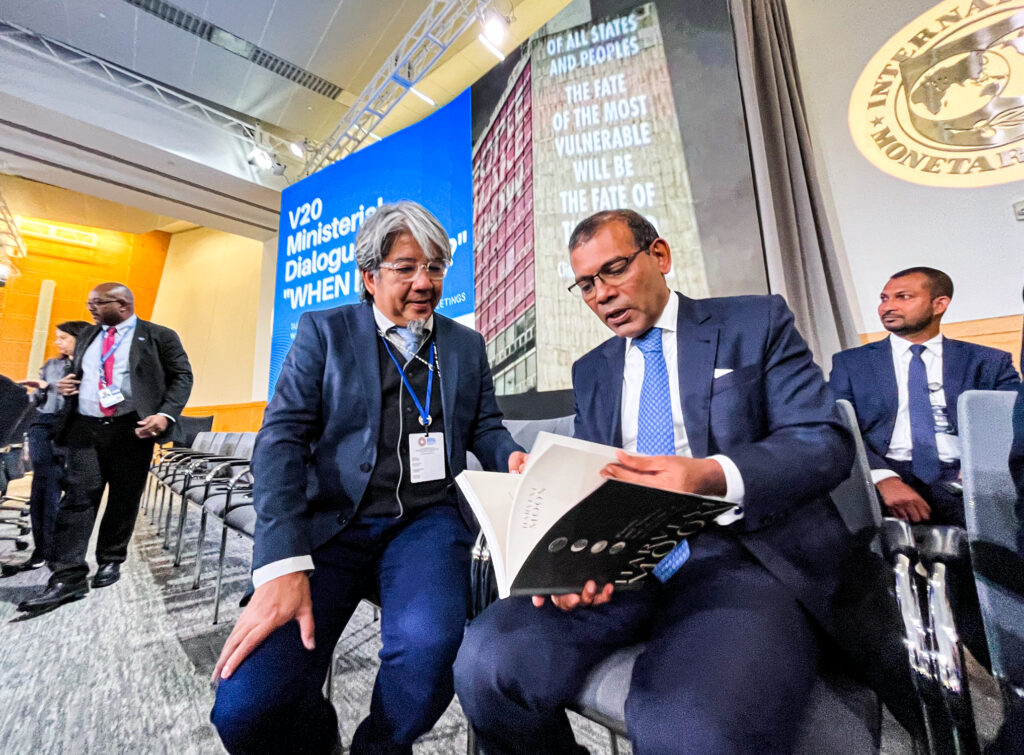
Last October 16, 2022, the V20 Group held its ministerial dialogue titled When Is Now? in Washington, DC. Renato Redentor Constantino, Institute for Climate and Sustainable Cities Executive Director, and Mohamed Nasheed, Climate Vulnerable Forum Ambassador for Ambition, were present. The Harvest Moon anthology of poems and stories was also on the table, as an invitation to widen the policy-making conversation on climate solutions through stories and art. Photos © Denise Fontanilla/ICSC/V20
Culture lives outside any walls. Outside any conference. But there is a responsibility that comes with occupying spaces of power as well.
Rewriting COP
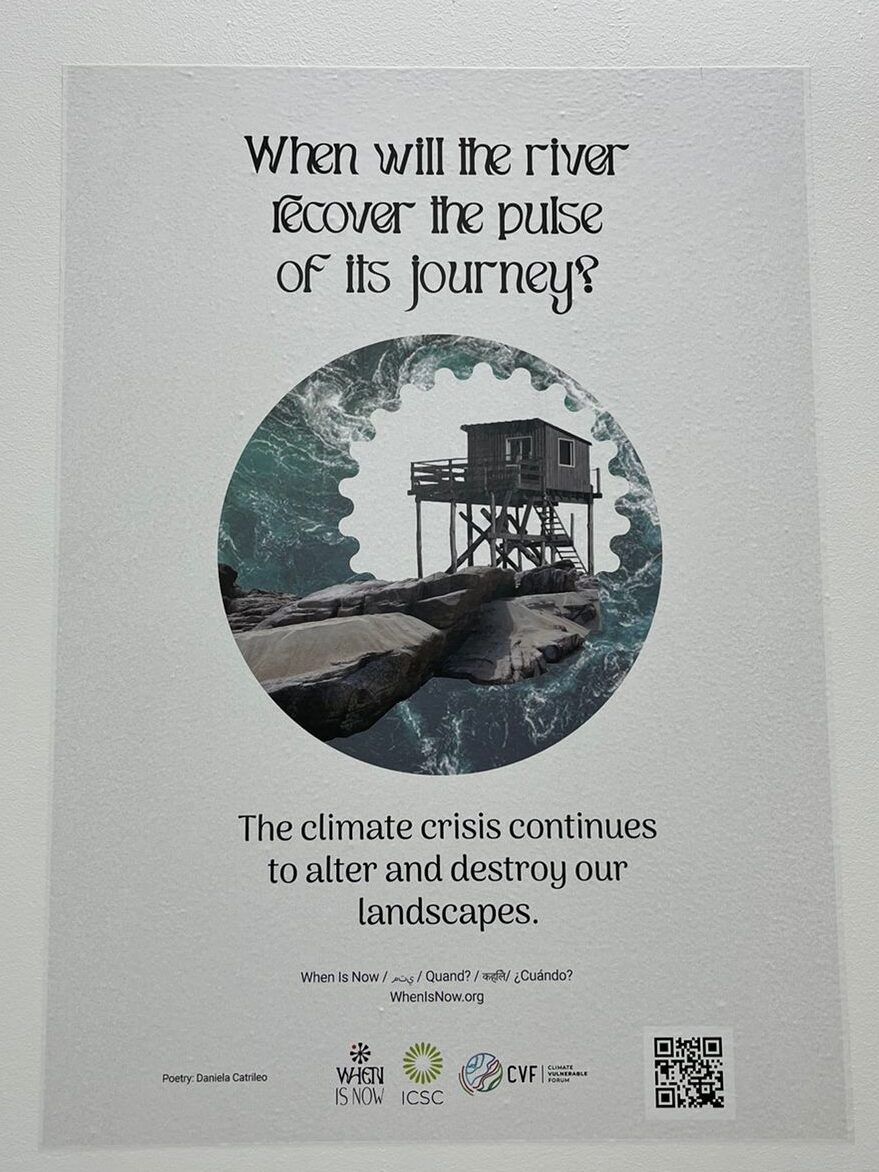
Agam Agenda’s global creative campaign When Is Now aims to bring arts and culture into climate discussions, and place the spotlight on the integral role played by cultural expression in long-standing change. With the transdisciplinary collaboration of visual artists and poets from across the globe, When Is Now has put together a collection of stories that reflect the lived experiences of those at the forefront of the climate crisis.
As Institute for Climate for Sustainable Cities Executive Director and Harvest Moon anthology co-editor, Renato Redentor Constantino, expressed: “First, we must tell our stories. First, we must encourage others to tell their stories. And yes, before we write, first, we must read, we must sing, and we must live.”
Culture lives outside any walls. Outside any conference. But there is a responsibility that comes with occupying spaces of power as well. As world leaders and decision-makers meet to determine the fate of many communities, the contributions of culture need to be spotlighted as valuable knowledge sources for collectively reimagining and creating paths towards regenerative planetary relationships.
Following last year’s interventions at COP26, this year, a collection of poems and paintings from the When Is Now campaign are currently on exhibit in Egypt at COP27. For more information on these activities, take a look here.
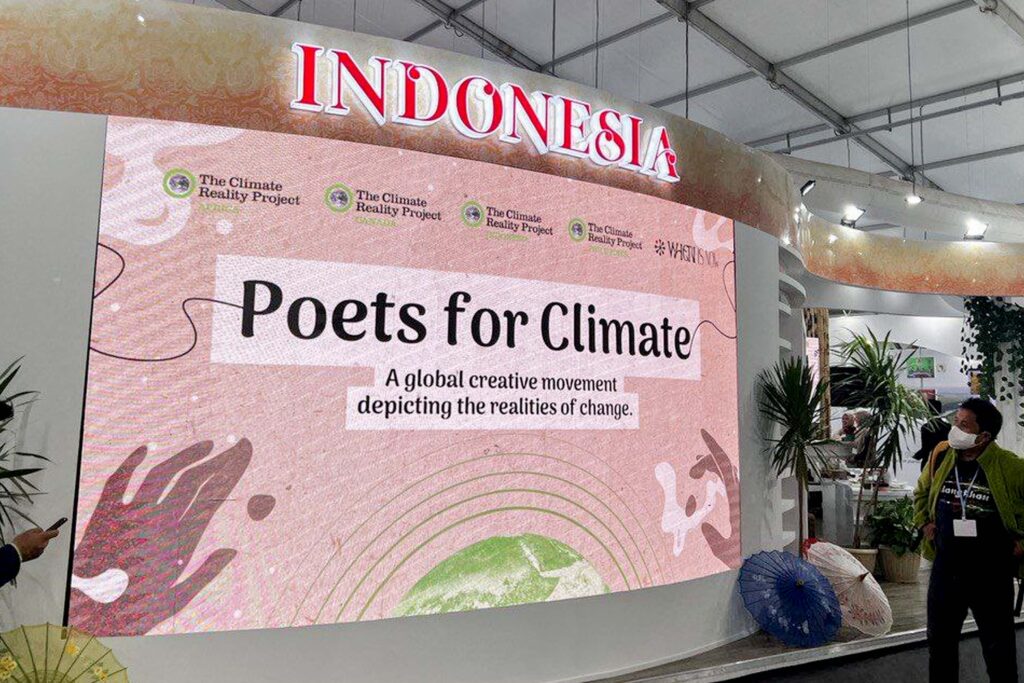


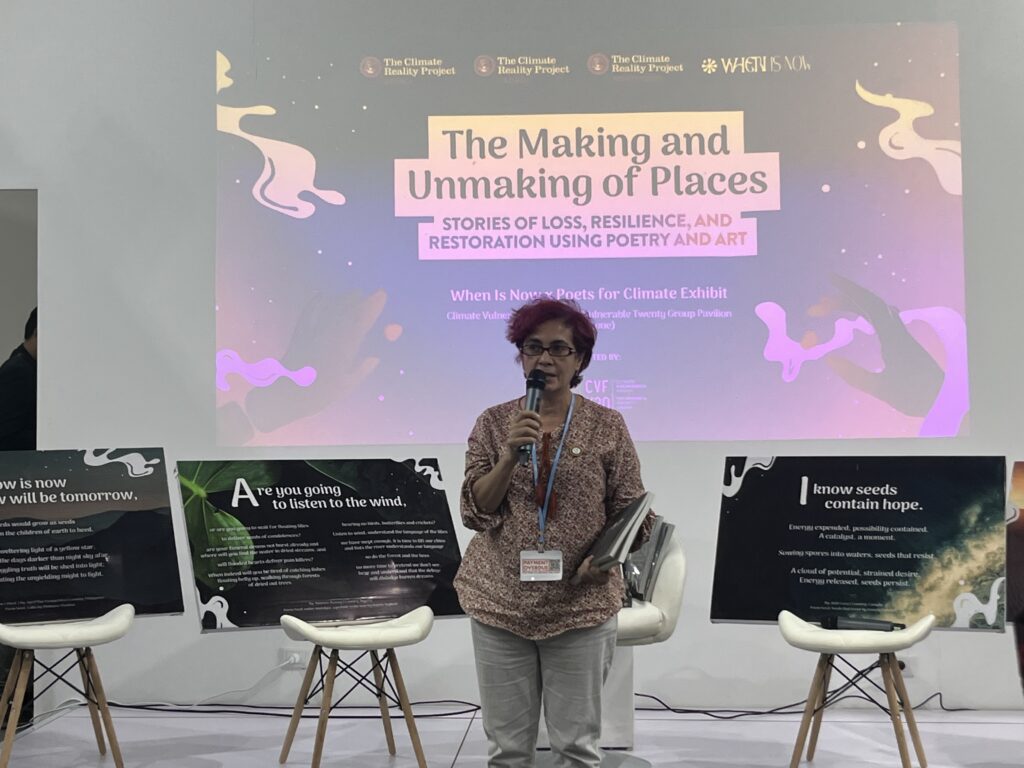
When Is Now is a global campaign that aims to lift arts and culture into climate policy arenas, and part of four side events at the 27th Conference of Parties (COP27) in Egypt this month. Mobilized by the Agam Agenda, the campaign is bringing poets’ and artists’ voices to COP27 to amplify how decision-making on climate challenges must include culture and the arts. Photos © Climate Reality Project Philippines.
We call on you to #RewriteCOP by submitting creative expressions on the experiences of territorial transformation and climate change effects, both historical and present, in your place. Places hold and generate culture, spirituality, food, shelter, community. Places are where what we could be meets what we become. We want to explore how places are being made, undone and transformed in the face of the climate crisis.
What are the places that make you? What bioregion(s) are you rooted in? How are they changing? How can we reimagine place-making in the climate crisis?
Let’s grow a garden of voices that illuminate the collective experiences of our planetary unraveling, and help weave connections across our shared home.
Editor’s note
Agam Agenda strives to bring the arts and humanities into climate discussions and climate action. Through trans-disciplinary collaborations with artists, researchers, poets and youth, Agam Agenda provides a platform to draw creative and cultural knowledge needed to imagine diverse resilient futures. This piece, written by Aina Eriksson and Maria Faciolince, articulates the motivations held by Agam Agenda on the importance and role of culture in climate negotiations. Aina Eriksson is a development communicator working as a writer for Agam Agenda, and Maria Faciolince, is an ecofeminist activist who guides Agam Agenda’s strategy for creative partnerships and mobilisation.
